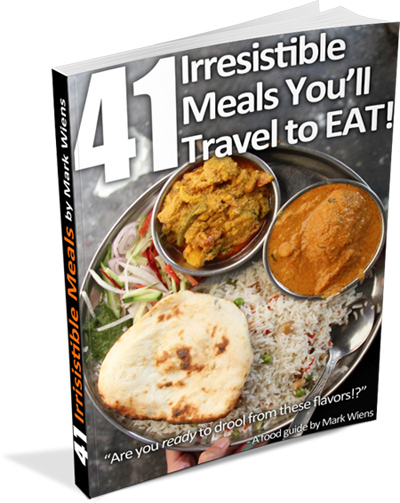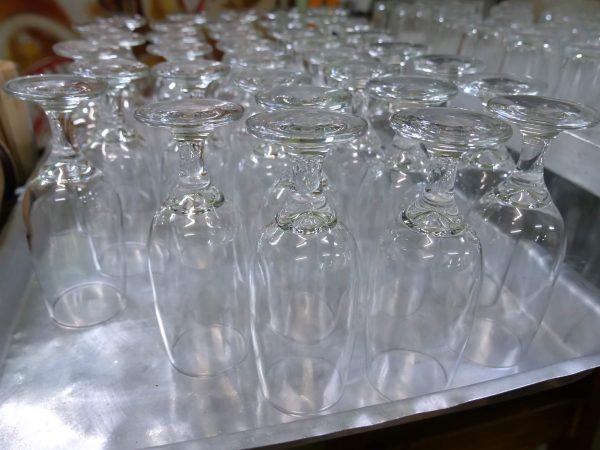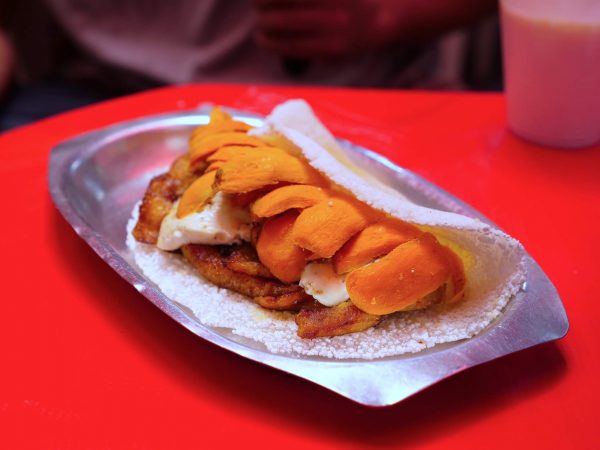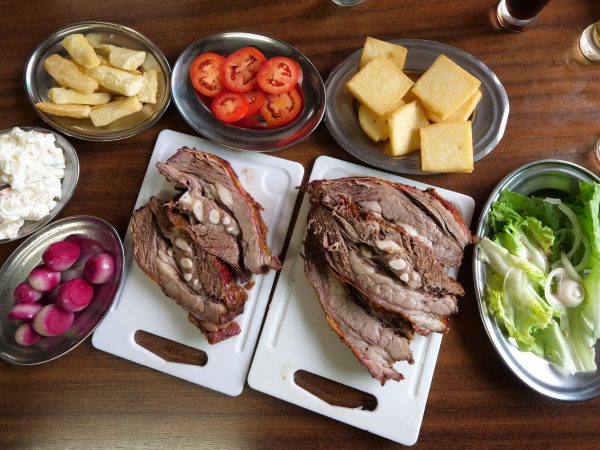
Tacacá is a vibrantly sour, spicy and pungent stew. This Northern Brazilian favorite food is easily one of the most exciting and unique foods in all of the Amazon region.
Tacacá da Diva is a great place to eat this food, a stainless steel street cart serving Tacacá in the amazing city of Belém, Brazil.
In this article I want to share with you all the details of a meal of Tacacá, a truly stunning example of Brazilian local food.
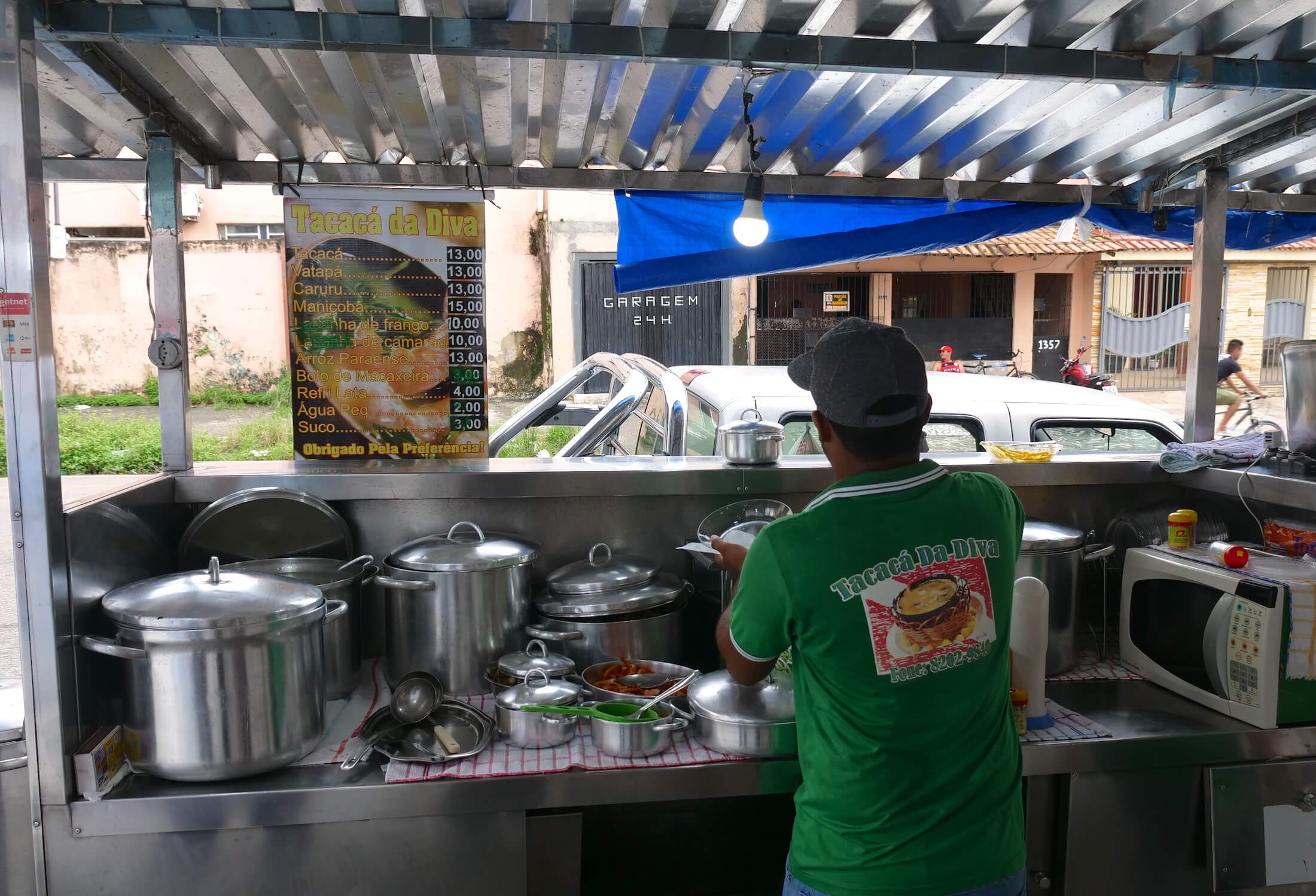
What is Tacacá?
A favorite local food in the Northern states of Brazil, Tacacá has some of the most wild and wonderful flavors your tastebuds could ever dream to find.
This beautiful yellow soup contains large amounts of cassava fermentation by-products, and a few ingredients that your nose will enjoy almost as much as your tastebuds.
The powerful aromas of Tacacá are exciting your senses even before you’re sitting down to eat, and just wait until you learn about jambu, a numbing flower they use in every bowl of Tacacá.
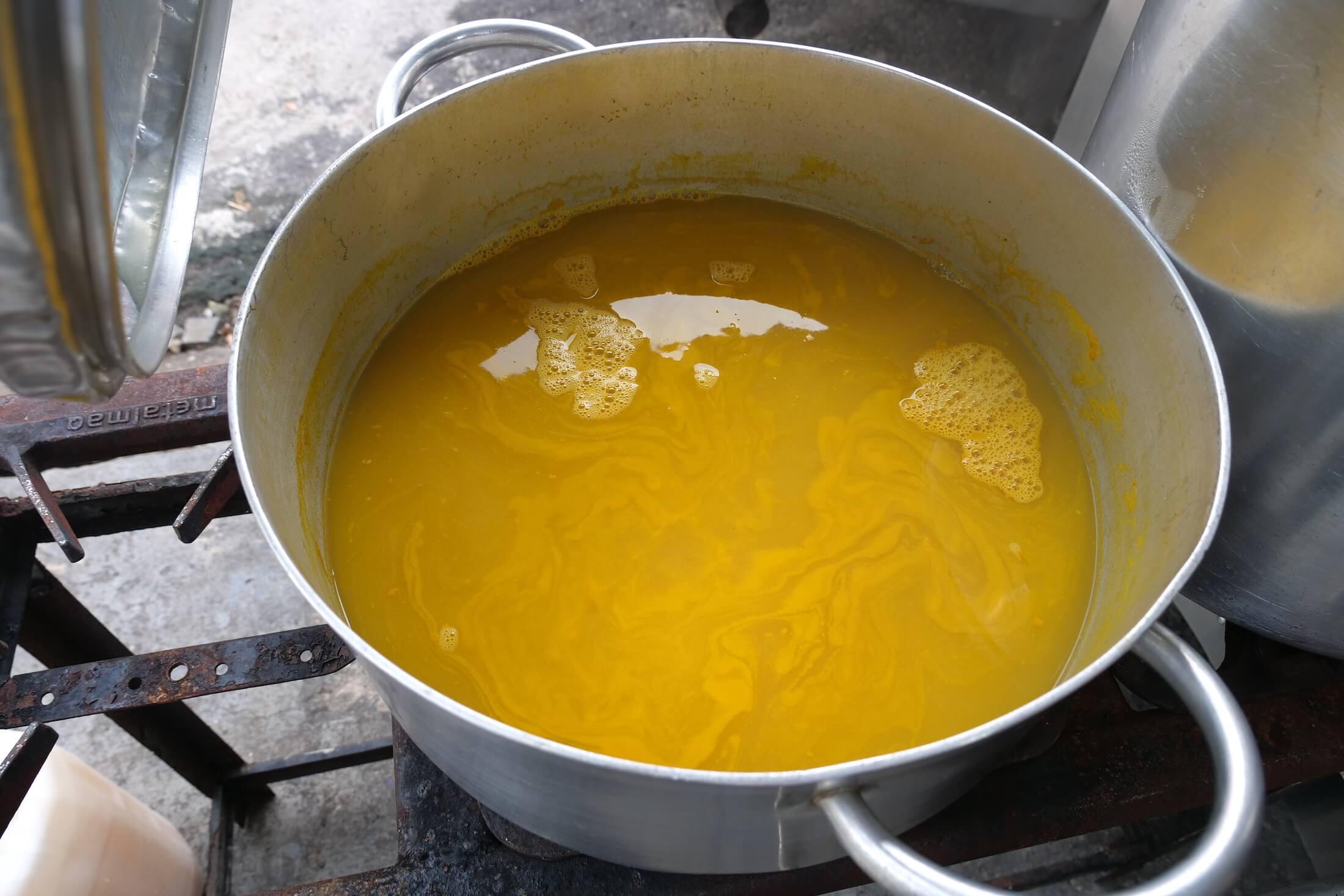
How To Make This Food
They serve Tacacá like a soup, but the liquid ingredient has to sit, and stew, needing anywhere from 12-16 hours before its ready to eat.
This yellow liquid is ‘Tucupi,’ and it is surely one of the single most gloriously sour flavors I think my tongue has ever tasted. Tucupi is a by-product of fermenting manioc (cassava), and is also one of the staple sauces waiting on almost every table in Northern Brazil.
There is just such a unique flavor to tacacá, but there are also many other ingredients you can choose to add into this soup as well.
Mind-Numbing Flavor (Jambu Leaves and Flowers)
The next ingredient you just need to know about is jambu, a type of paracress, a vegetable native to the Amazon.
Very similar to Szechuan Pepper in the effect it has on your tongue, its almost like a tiny electric shock the first time you experience this beautiful food sensation.
Get exclusive updates
Enter your email and I’ll send you the best travel food content.
After adding ample amounts of both jambu and tucupi, Tacacá only needs some tiny dry shrimps, some small fiery yellow peppers (pimenta), and finally a large scoop of manioc gum (goma) for it to be complete.
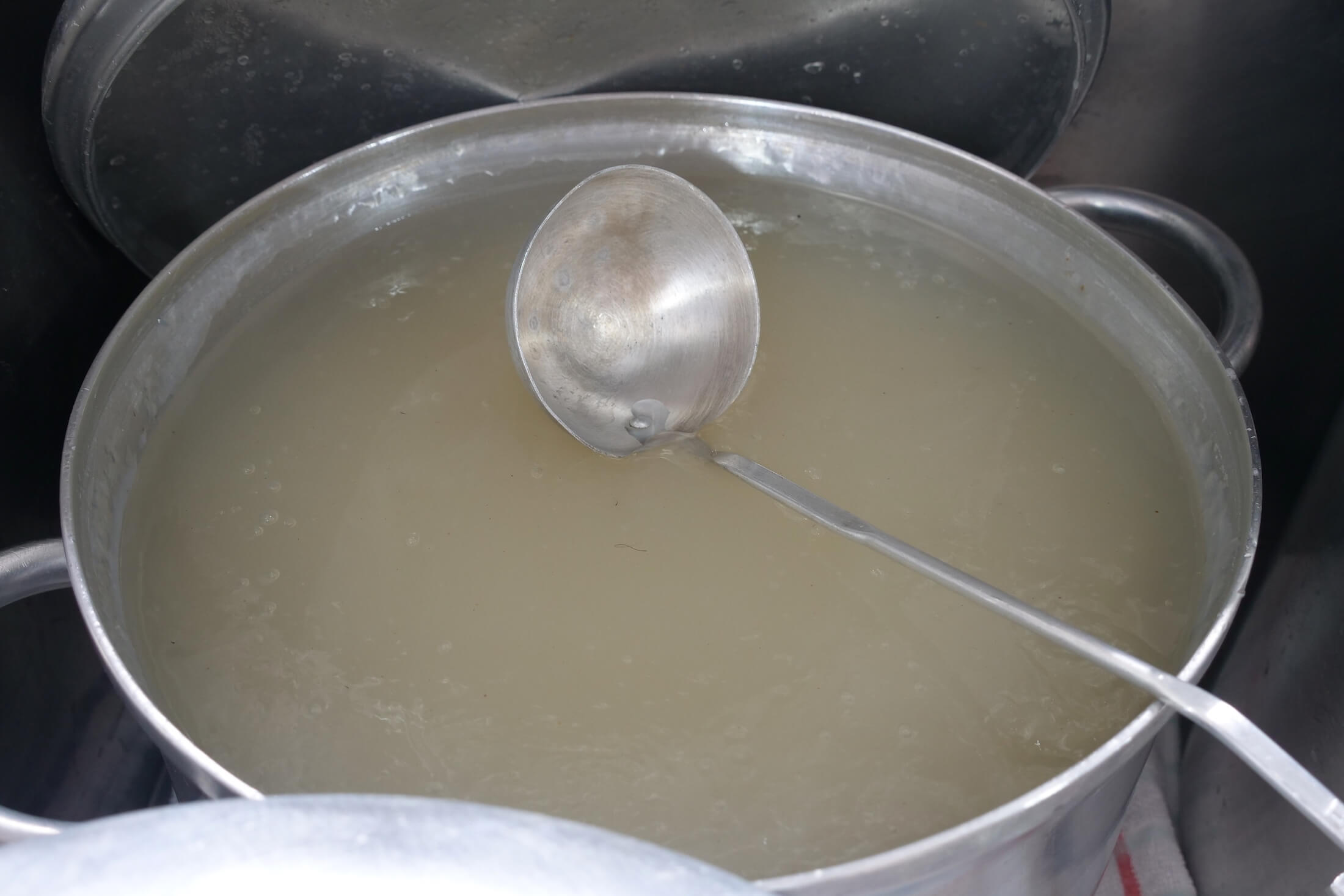
Manioc Gum (‘Goma’)
Because manioc needs to ferment for such a long time before the tucupi is ready*, the chef making Tacacá will usually just buy the yellow juice from a nearby market vendor.
Another by-product though, is the goma, the manioc gum, and this incredibly thick and starchy consistency is just an amazing edible creation on its own.
The chef will glob a huge dallop of gum into your bowl, and as it sinks to the bottom, it immediately starts to thicken the Tacacá broth even more.
Note:* Families who make Tucupi therefore, are very important in local restaurant and street cart food production. Similar to the way that people here work with açaí palm berries, Tucupi is another food that almost entirely comes from ‘cottage industry’ production. (Learn more about this right now)
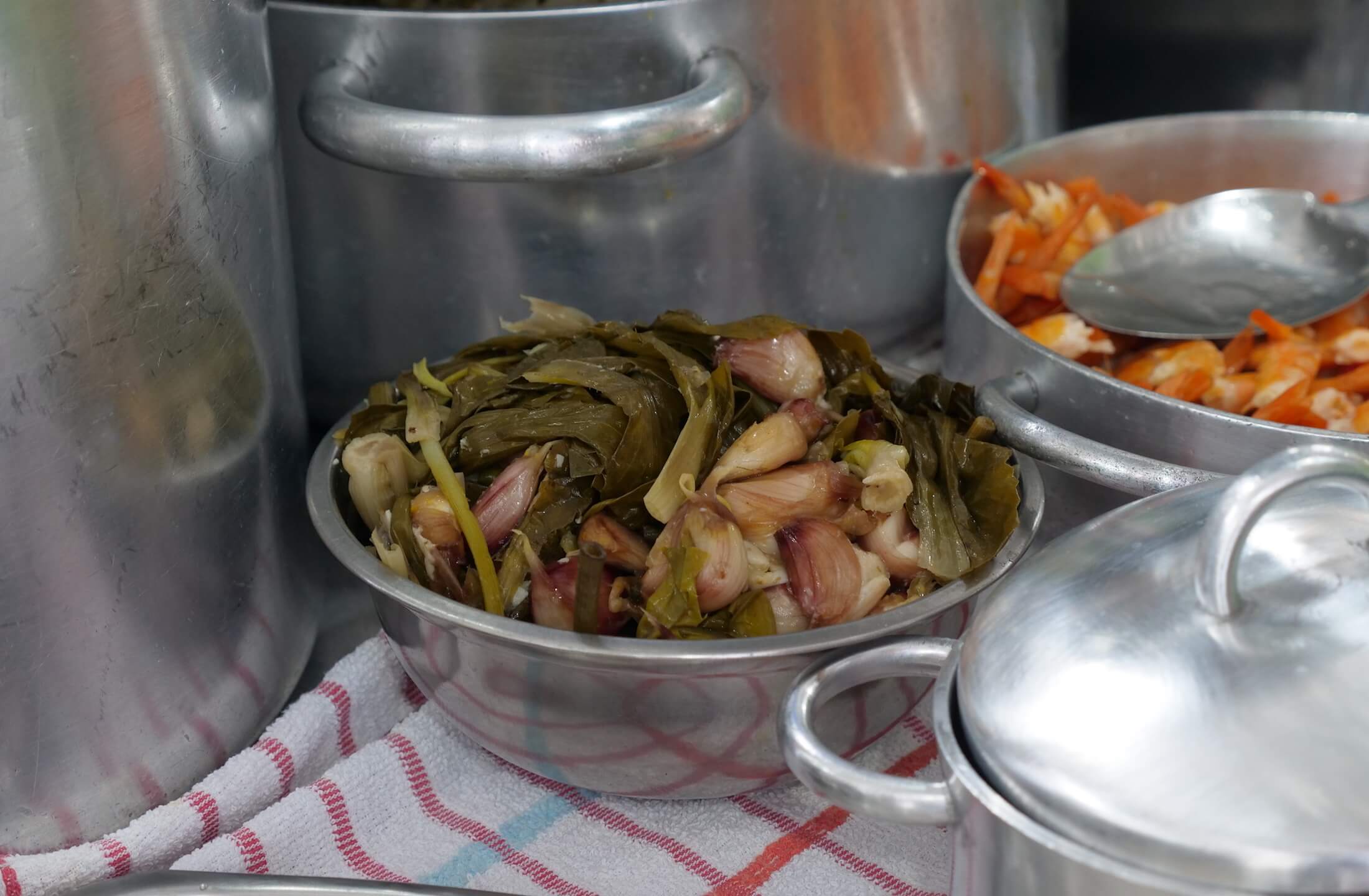
Additional Flavor Boosters
Your soup is ready to eat, but after you try it first, feel free to add even more ingredients, and have Tacacá the way that many locals in Belém eat it.
Ask for some garlic and herbs, and make sure you don’t forget an extra scoop of pimenta chili oil.
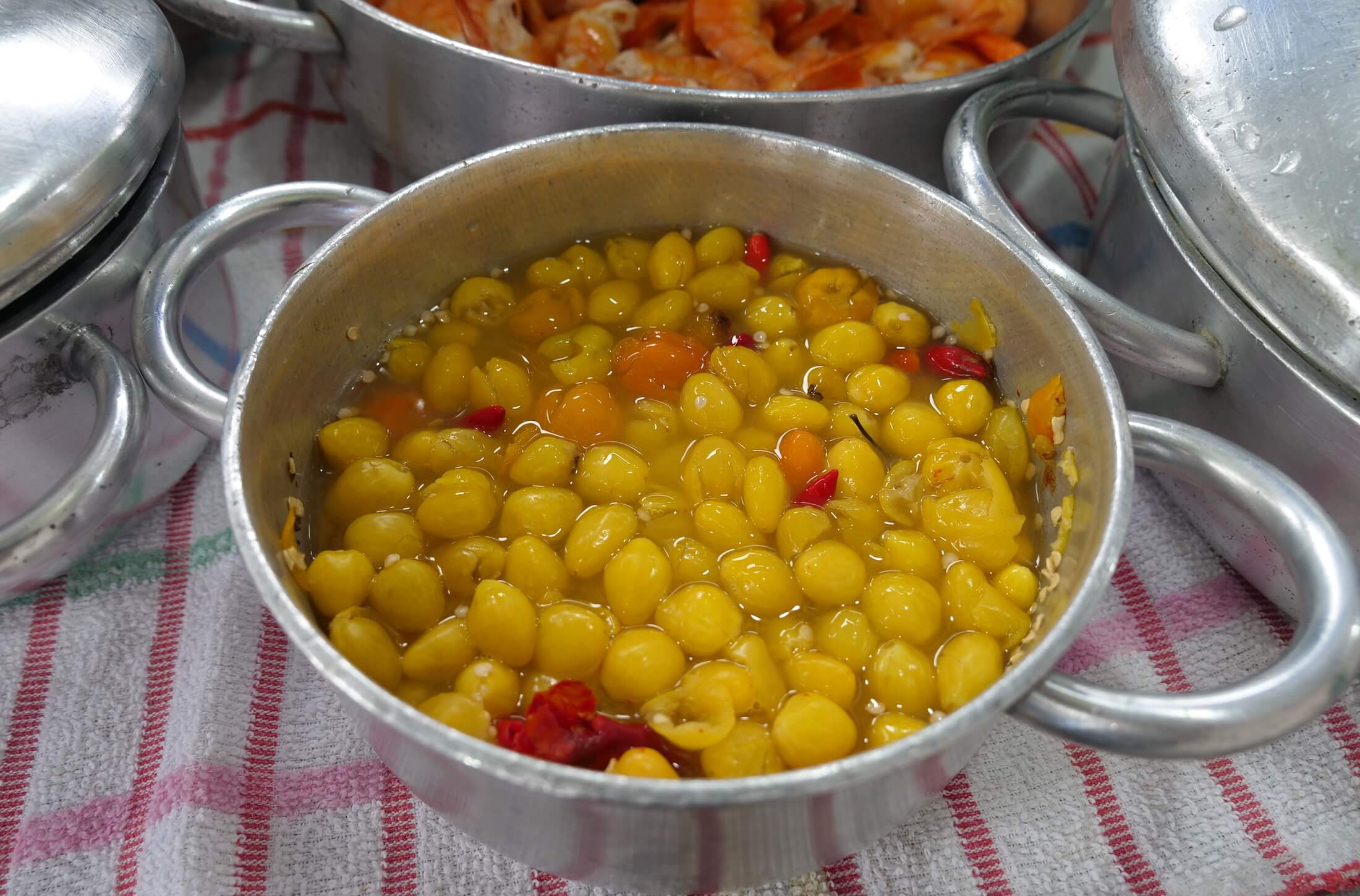
Warning – Pimenta Heat!
It is an absolute must in my mind, that every time you see a container of chilis or pepper oil on the table in Brazil – you take it.
The food here is surprisingly unspicy compared to how massively hot almost all of the fresh peppers are, anywhere you go in Brazil.
Most of the time, people prefer to infuse oils with the chili pepper heat, leaving the chili flesh to soak in closed glass containers.
However, sometimes you will find the chilis on their own as well, and this is when you need to prepare yourself for some seriously citrusy and fiery pepper flavors – and dive right in with no reservations.
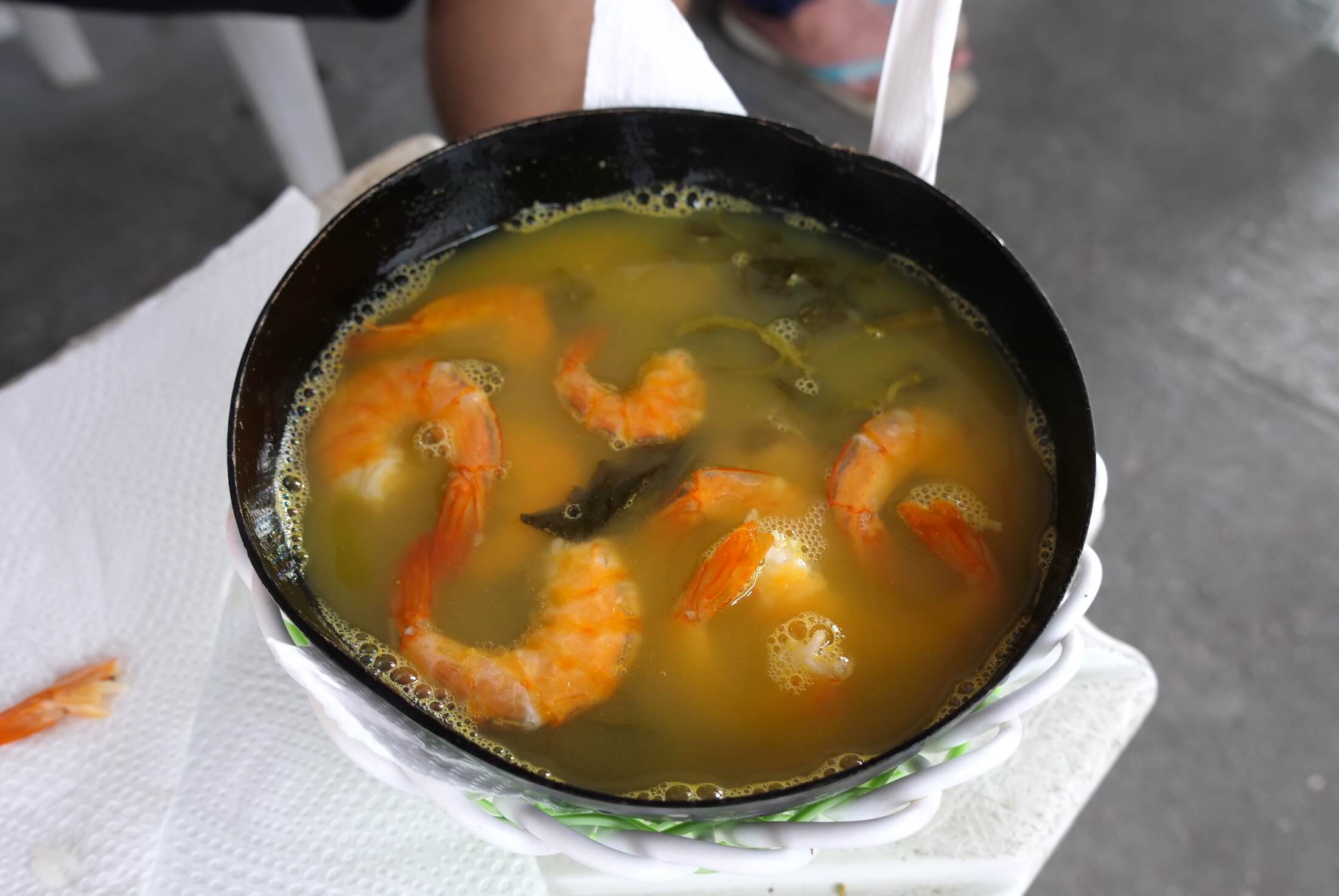
How to Eat Tacacá
There are a few traditions to this food, and one of them regards timing, and another the utensils.
People like to eat this in the afternoon, and there is an afternoon rush in Belém at around 4pm, every day, rain or shine.
People need their Tacacá, and we were only too happy to be part of this pre-dinner sour soup snack during one of our favorite days in Belém (you can watch the video clip here).
The Gourd Bowl (“Caiu“)
Next, the second part of the Tacacá tradition, is that you will see how people love to eat this soup out of a gourd (not just a regular plastic or ceramic bowl).
This gourd is a “caiu,” (‘kai-yoo’) and yes, it comes straight from the jungle just like almost all the food ingredients they use in Northern Brazil. Its amazing.
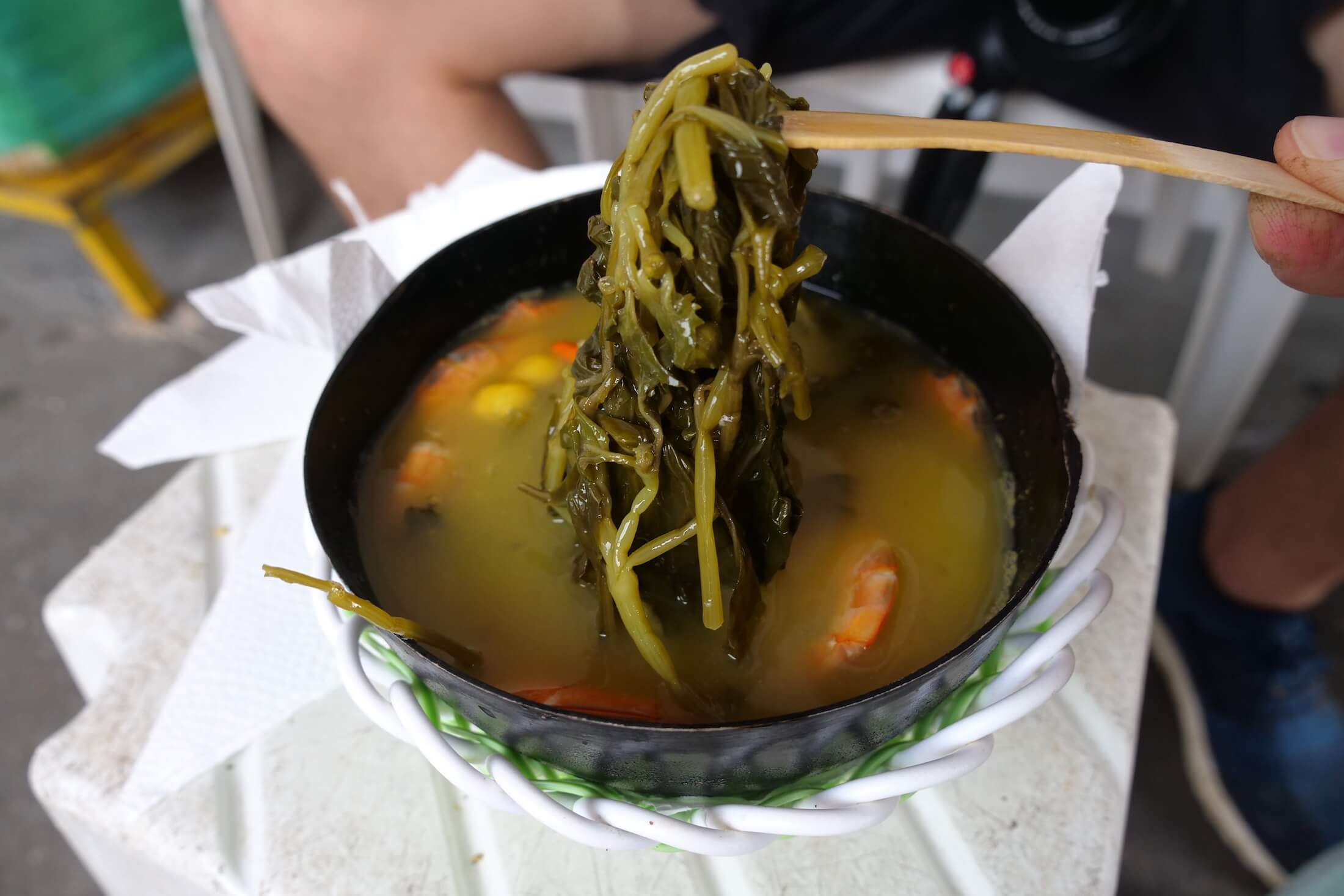
Tradition Just Tastes Better
It just feels right as well, to eat using these gourds, and also the small stick that each serving comes with as well.
Instead of a fork or spoon, you are given what looks like an ice cream sampling spoon. Its just a small wooden spoon with a tiny forking divider at the tip.
This is for lifting up the jambu leaves to your mouth, and its also just kind of fun to use something different, whenever you get the chance to eat such a wild and crazy new food.
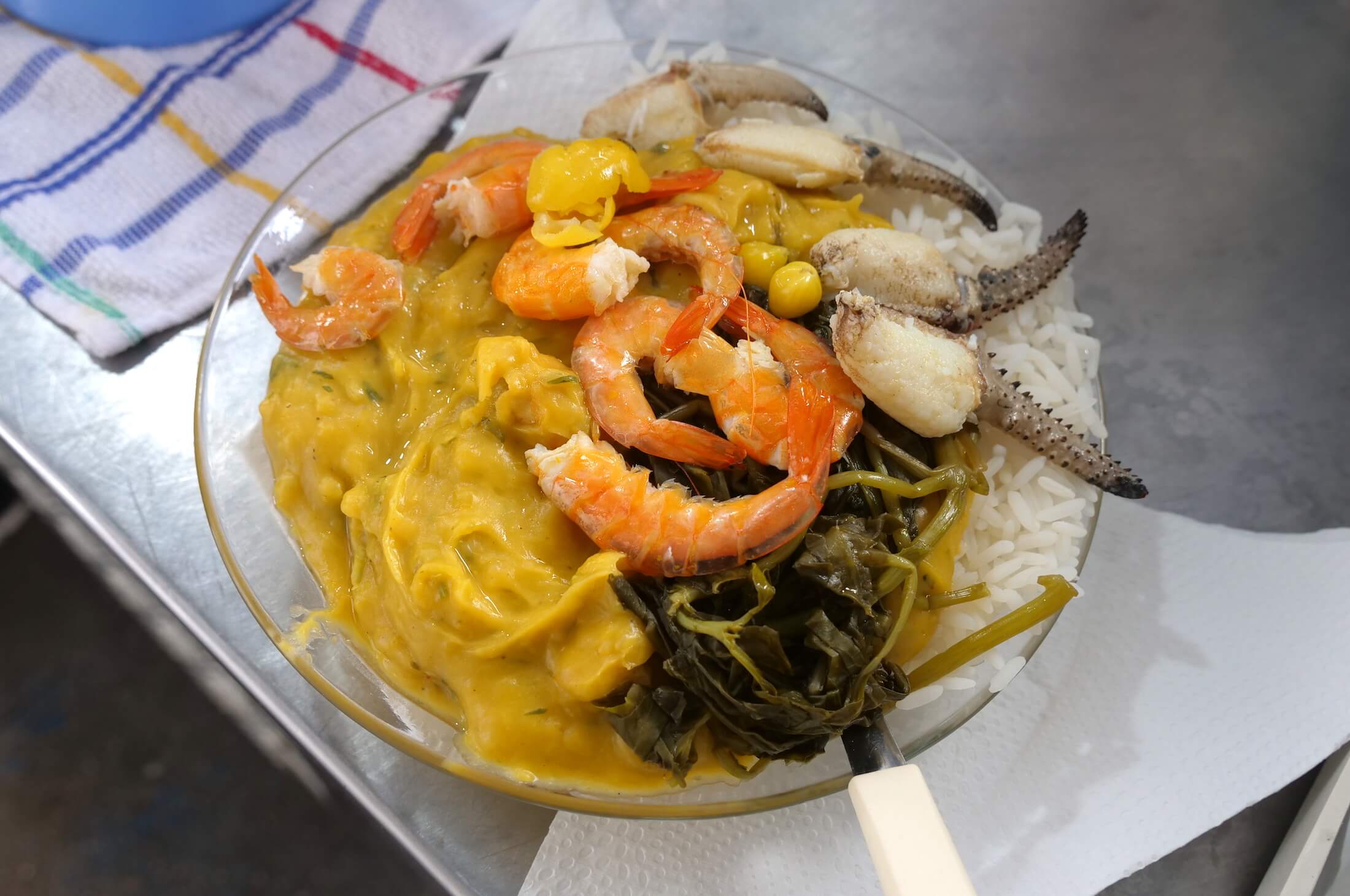
Vatapá
Last but not least, I am assuming that when you finish your Tacacá you are either going to immediately order a second bowl, or look for something else to try.
Seriously, the food at Tacacá da Diva is so good, there’s no way you can leave with just one bowl.
When this happens, be sure to try either the Manicoba, or the Vatapa (or of course, a second bowl of Tacacá is a great choice as well).
Both Vatapaá and Maniçoba are local favorite foods in Belém, in the entire Amazon region, and both are foods that I would absolutely love to have again, right as I am typing this article.
How to Eat Vatapá
This is a gloriously gooey mess of manioc starch, tucupi, and fried chunks of bread. The consistency is very similar to that of peanut butter, as is the heaviness and fullness of flavor.
It is only slightly oily, and just before you start to eat, the chef will give you a final ladling of more of the tucupi sour yellow liquid, helping to loosen up the mass of vatapá covering your rice.
Not only is vatapá common to have with rice, but in Bahia, in Eastern Brazil, the All-Time Super Snack known as Acarajé also uses a hearty amount of vatapá in its recipe (read about that here, or watch a video to learn more here).
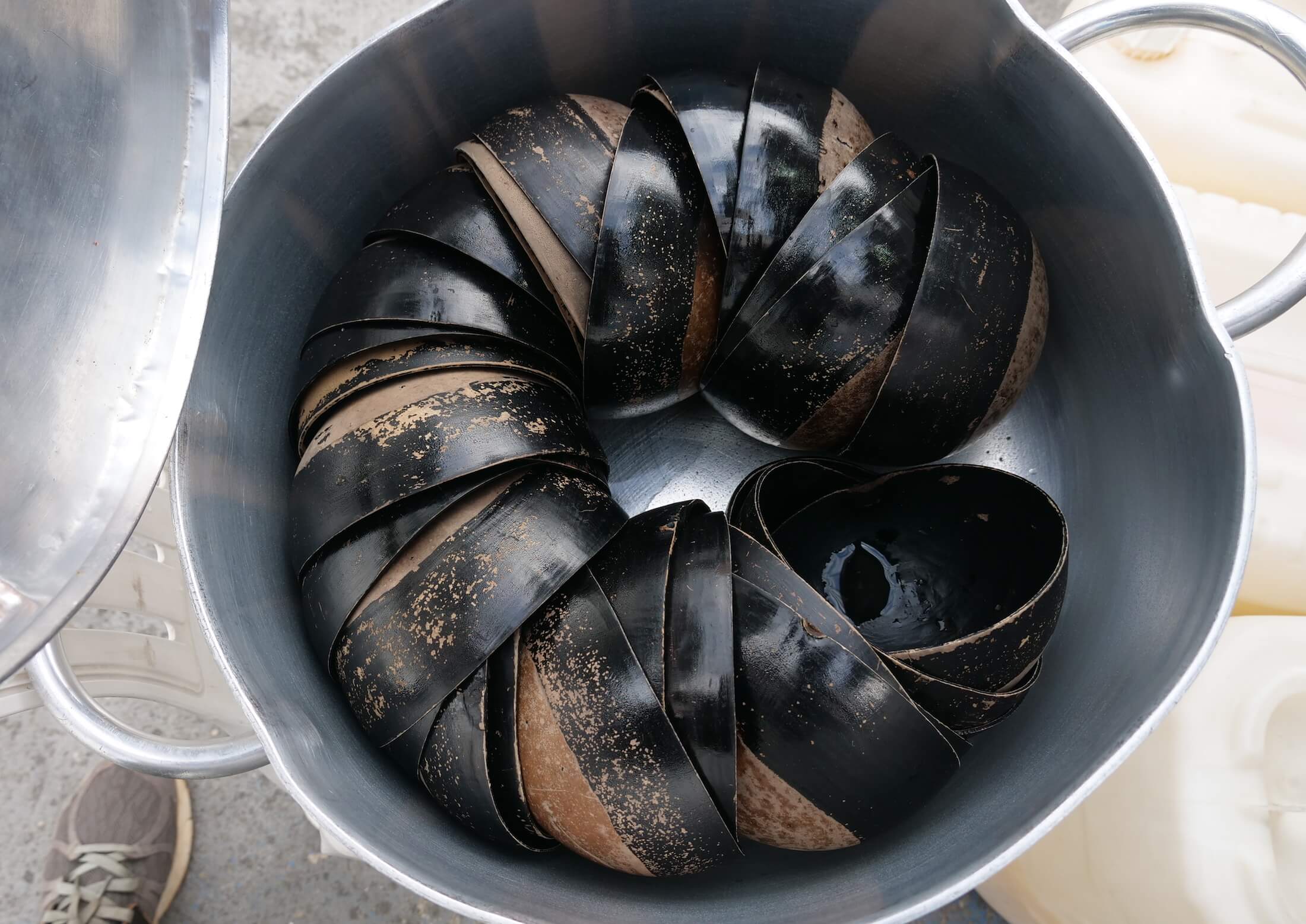
Name: Tacacá da Diva
Location: Google Maps (link here)
Hours: 3:30pm – 10:30pm (Open Daily)
Price: R$13 for each bowl of Tacacá (US$4.25)
Get exclusive updates
Enter your email and I'll send you the best travel food content.
